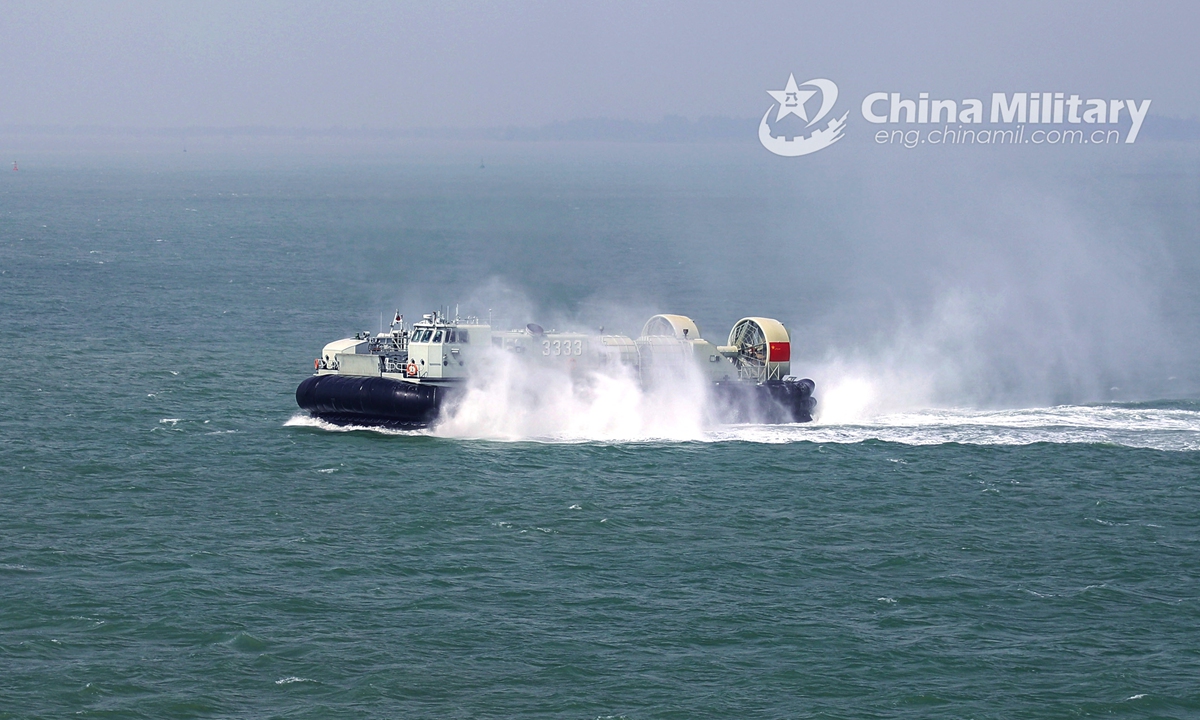High alert needed with Biden administration on S.China Sea, Taiwan Straits

A Landing Craft Air Cushion (LCAC) attached to a landing ship flotilla with the navy under the PLA Southern Theater Command steams to designated waters in executing landing and disembarking missions in waters of the South China Sea during a maritime training exercise on November 18, 2020. The exercise lasted four days, focusing on 10 subjects including comprehensive defense, Landing Craft Air Cushion's (LCAC) transfer, visit, board, search and seizure (VBSS) operation, and live-fire operations. (eng.chinamil.com.cn/Photo by Ze Tianyu)
US warships once again entered the South China Sea on Sunday, a bluff and muscle-flexing action that pundits believe would damage regional stability.
China should be prepared to confront the US in the South China Sea and the Taiwan Straits, no matter who sits in the White House, they said.
Tracking data released by the South China Sea Strategic Situation Probing Initiative (SCSPI), a Beijing-based think tank, shows that the Makin Island Amphibious Ready Group (ARG) entered the South China Sea on Sunday - the USS Makin Island (LHD-8) entered from northern Philippines, and the USS Somerset (LPH-25) entered from southern Philippines.
The US move came after the Pentagon announced that acting secretary of defense Christopher Miller left on Saturday for Indonesia, the Philippines, and the US Indo-Pacific Command Headquarters.
The current US administration aims at keeping a military deterrent posture against China in the remaining 50 days, which shows that the US will maintain a military presence in the South China Sea and the Taiwan Straits for a long time, Li Jie, a Beijing-based naval expert, told the Global Times on Monday.
According to statistics released by the Chinese Foreign Ministry, US military aircraft conducted more than 2,000 sorties in the South China Sea in the first half of 2020. By mid-October, US warships had sailed through the Taiwan Straits 10 times this year, according to public records from the "defense authority" of the island of Taiwan.
The US warship's entry in the South China Sea once again shows that the US is the destroyer of regional peace and stability, and it is not welcome by regional countries that have just joined the RCEP framework with China, Zhang Junshe, a senior research fellow at the PLA Naval Military Studies Research Institute, told the Global Times on Monday.
Zhang predicted that the US will likely conduct amphibious exercises in the South China Sea and conduct troop mobilizations between the Pacific and Indian oceans.
As for the Biden administration which assumes power in January 2021, experts like Zhang believe that the Democrats are likely to press China with more "norms and rules, alliances and regional assertiveness," like they did before.
For instance, in April 2014, then-US president Barack Obama and then-Philippine leader Benigno Aquino signed a military pact that allowed for an expanded US military presence in the Philippines, Reuters reported.
Yang Xiyu, a senior research fellow at the China Institute of International Studies, speculated that China and the US, after Biden takes office, are unlikely to engage in military clashes in the South China Sea, but there are risks in the Taiwan Straits.
No matter how the US domestic politics changes, China should continue to enhance its military preparedness in these two regions, said analysts.
Biden is still searching for his defense secretary. US media reported that Biden is considering retired four-star general Lloyd Austin, with the former undersecretary of defense for policy Michele Flournoy being another leading candidates. Both of them are considered hawks.
Newspaper headline: High alert needed on Biden admin’s action in S.China Sea